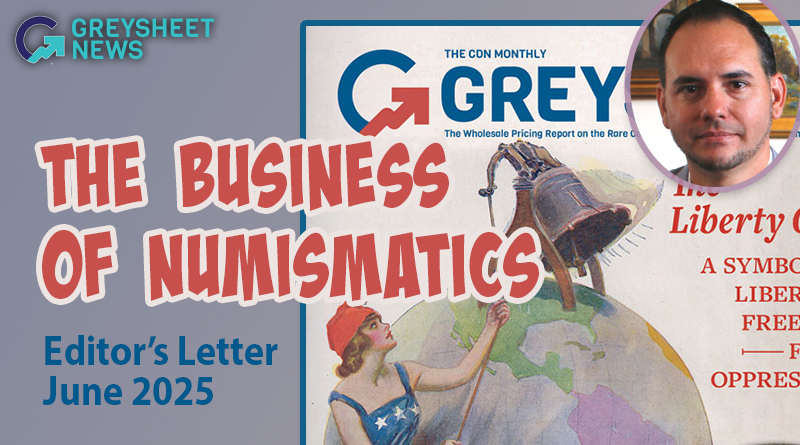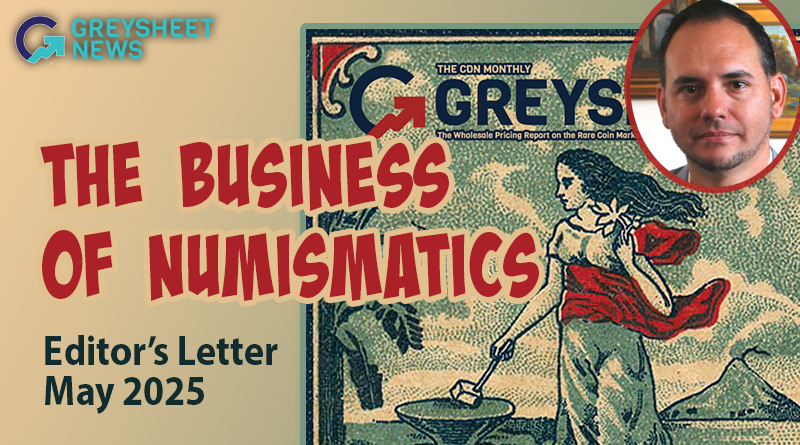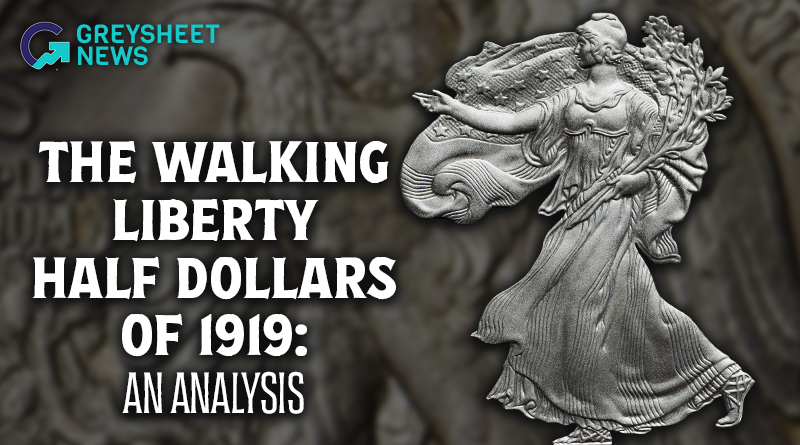The Business of Numismatics: August 2022 Greysheet
The August 2022 column by Patrick Ian Perez discussing the current numismatic marketplace.
I write this issue’s column as the Summer FUN Convention is taking place. While I am not in attendance, the handful of reports I have heard so far are that the show is more active than the Long Beach Expo held the prior week. The question on most dealer’s minds seems to be what the direction the market is going to be for the next five to six months. It is becoming clear that the potential bottleneck for the free flow of product, on the wholesale side, is going to be how easily, or not, dealers adjust their pricing to current levels. Those who cannot, or are unwilling to, mark their prices to market will find that their sales will suffer.
A great aspect of the conclusion of the month of June, as the halfway point of the year, is that it provides ample market data. Year to date (June 30th) the S&P 500 was down 20.58%, while the one-year return of the index was minus 11.92%. The index was down 21.08% off its all-time high, which was set on January 3rd of this year. Worldwide, the S&P Global BMI was down 21.33% year-to-date. I give these statistics as a frame to the primary topic I wanted to address this month. Lately, I have still seen numerous writings and articles claiming that rare coins are a so-called 'inflation hedge'. I am neither old enough nor well-read enough to know the first publication that promoted rare coins as such, but this statement is no longer valid. As I alluded to in my July Greensheet column, numismatic items are not an inflation hedge. Rather, they should be viewed as alternative assets.
As an example, there is only one reason the 1933 Saint-Gaudens went from $7.59 million in 2002 to $18.87 million in 2021: asset price inflation. Let us use a simple corollary: the percentage increase of this famous U.S. coin from its prior sale to its most recent sale is 148.645%. Taking the closing price of the S&P 500 index from the exact same dates of the sale in 2002 and 2018 of the 1933 Saint-Gaudens, we observe a return of 368.251%.
WHAT CREATES ASSET PRICE INFLATION?
Simply put, monetary policy. The changing mechanisms of money creation, lending rates, and leverage are the primary reasons all assets have increased significantly in value over the past 20 years. The same (generally speaking) high net-worth individuals who own significant equity assets are the same ones who buy and bid against each other for rare coins.
The reason why traditional equity markets have fallen so much recently is not because of inflation, but due to asset deleveraging. This is most notable in cryptocurrency which was primarily caused by the Federal Reserve decision to raise the benchmark interest rate 75 basis points, the largest such increase since 1994. It is expected that there will be two more 75 basis point hikes, on July 27th and September 21st. If the Federal Reserve holds fast, inflation will be reined in and the deleveraging will continue. But if the Fed acquiesces to market pressures, as in the past, more problems will be created.
Like many other asset classes, the rare coin market has enjoyed a marvelous bull market the past two years, however most intelligent market observers agree that demand is slowing, mainly because prices got to the level—in market terms—of being overbought. Inflation, defined as the increasing price of common goods, is exactly the thing that is putting the brakes on the rare coin market. If rare coins were a hedge, wouldn’t the market increase in such a time?

WHAT IS AN “INFLATION HEDGE”?
I contend that the only true inflation hedge is gold bullion in the form of bars or bullion products that have zero numismatic premium or value. Gold bullion is infinitely liquid, transportable, and fungible. If absolutely necessary, gold bullion can be sold for Swiss francs, Emirati dirhams, Qatari riyals, or any other currency that is not depreciating as quickly as the U.S. dollar. Despite this, the gold spot price, as measured in U.S. dollars, has taken a pounding recently (early July), because the dollar maintains its strength against many other currencies that are rapidly weakening.
In summary, rare coins should be viewed as an asset, part of an overall broadly balanced, investment portfolio. Viewing a collectible as an “inflation hedge” is fraught because the primary driver of its value is an increase of the money supply, which is essentially the definition of inflation. The appeal of rare coins, and their long-term value, should be the idea that there is a long-established buyer base and extensive pricing history that has proven to weather various monetary and financial storms. During these turbulent financial times, the asset class of rare coins have held up remarkably well but this resilience may well be tested over the coming months. Only time will tell.
Sincerely,
Patrick Ian Perez
patrick@greysheet.com

Download the Greysheet app for access to pricing, news, events and your subscriptions.
Subscribe Now.

Subscribe to The Greysheet for the industry's most respected pricing and to read more articles just like this.
Author: Patrick Ian Perez
Patrick Ian Perez began as a full time numismatist in June of 2008. For six years he owned and operated a retail brick and mortar coin shop in southern California. He joined the Coin Dealer Newsletter in August of 2014 and was promoted to Editor in June 2015. In the ensuing years with CDN, he became Vice President of Content & Development, managing the monthly periodical publications and data and pricing projects. With the acquisition of Whitman Brands, Patrick now serves as Chief Publishing Officer, helping our great team to produce hobby-leading resources.
In addition to United States coins, his numismatic interests include world paper money, world coins with an emphasis on Mexico and Germany, and numismatic literature. Patrick has been also published in the Journal of the International Bank Note Society (IBNS).
Related Stories (powered by Greysheet News)
View all news
Dramatic swings both ways, but mostly in the upward direction, have commanded the headlines.

There was no shortage of market madness towards the end of March and into April, from both a macro equity point of view and in precious metals.

Although the three 1921 Walkers boast the lowest collective mintages in the series, the 1919 dated coins are not too far behind.









Please sign in or register to leave a comment.
Your identity will be restricted to first name/last initial, or a user ID you create.
Comment
Comments